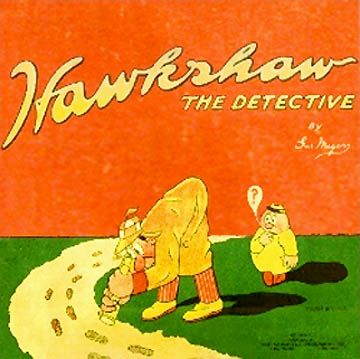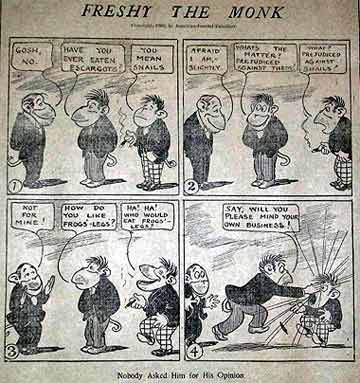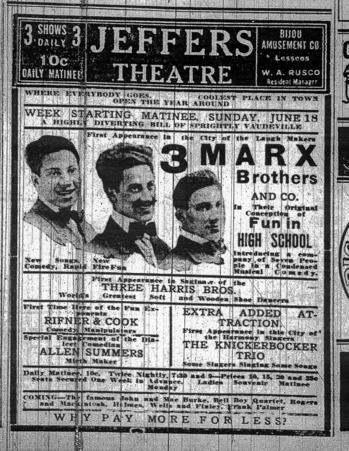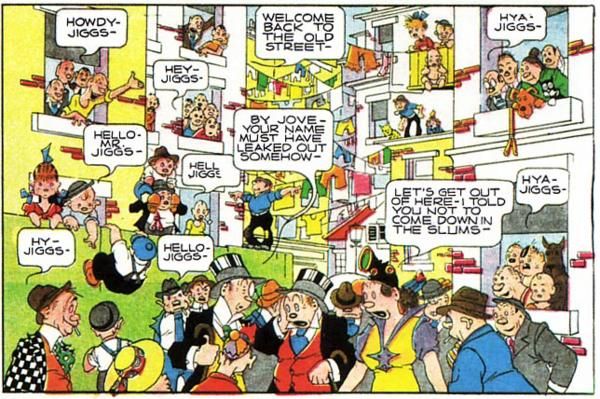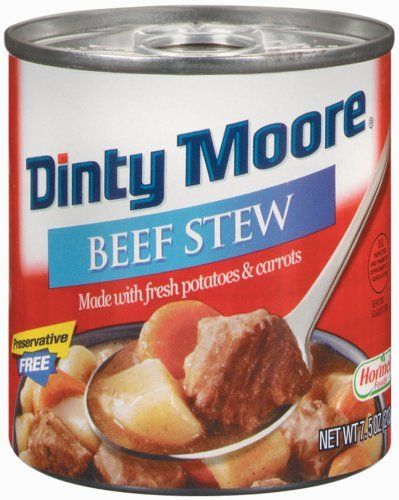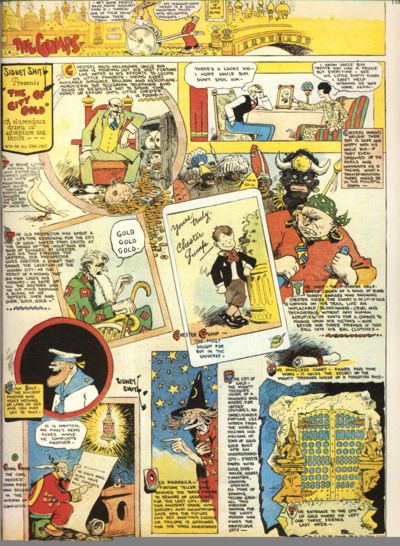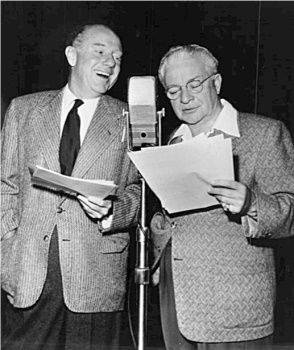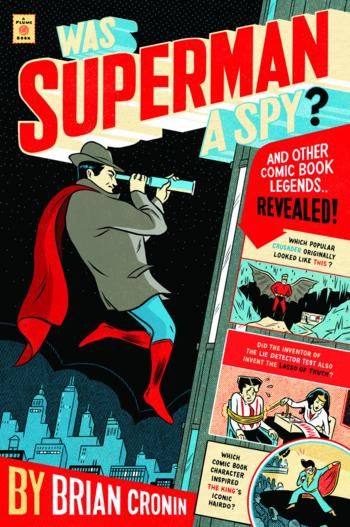This is the two-hundredth in a series of examinations of comic book legends and whether they are true or false. Click here for an archive of the previous one-hundred and ninety-nine.
For our 200th installment of Comic Book Legends Revealed, there are so many legends that we're going to need THREE installments for it! The special theme week is a walk through comic history, with legends from every decade from 1900 to 2009! Part One is up now, Part Two will be up Friday afternoon and Part Three will be up Friday night!
Let's begin!
1900s
COMIC LEGEND: The Marx Brothers' names were inspired by a comic strip.
STATUS: True
Charles Augustus "Gus" Mager was already beginning to make a living drawing cartoons for various Hearst papers when he came upon the idea that would eventually lead to a longstanding comic strip, but not before a number of changes.
After doing some funny animal drawings, the funny animals slowly turned into a series of funny "monks" (who all looked like anthropomorphic monkeys). Originally titled Knocko the Monk in 1904, Mager soon introduced various other monks, all with silly names, almost always ending in o.
Rhymo the Monk, Henpecko the Monk, Groucho the Monk...you get the idea.
Ultimately, he introduced a parody of Sherlock Holmes called Sherlocko the Monk (and his assistant Watso). This proved so popular that Mager gave them their own strip, Sherlocko the Monk.
However, to put into context how long ago this was, Sir Arthur Conan Doyle was still alive and he threatened to sue unless Mager changed the name of the strip.
He did, and Hawkshaw the Detective was born.
The strip continued until 1952 and Mager died in 1956.
That said, the issue here is the popularity of the Knocko series during the late 1900s, when the Marx Brothers were a burgeoning vaudeville act.
One night, while playing poker with the brothers, vaudeville monologist Art Fisher came up with "o" names for each of the brothers, based on various facets of their personality, Harpo (played the harp), Chicko (he got lots of "chicks"), Gummo (something to do with shoes) and Groucho (people aren't actually sure exactly why he was called Groucho at the time). The names stuck, and the brothers soon became national stars.
What's amazing to me is that this sounds like the type of story you'd have a lot of trouble verifying, except as it turns out, that night was amazingly reported on - pretty much every brother wrote about it in their biographies (all matching up) and Fisher recounted the story many times after the fact as well, and they all agreed with the basic premise, that Fisher named them after the Knocko comic strip one night while they all played poker.
Very cool.
1910s
COMIC LEGEND: Bringing Up Father had a character based on the creator of Dinty Moore beef stew.
STATUS: False
The basic concept behind George McManus' popular strip, Bringing Up Father (known mostly as Maggie and Jiggs, after the main characters) is that an Irish guy from the streets named Jiggs comes into a whole lot of money. So now this guy without "refined" taste is now quite rich, but he refuses to give up his old haunts and habits (which does not please his wife, Maggie, who wants the social status being rich is supposed to give you). It's a charming comic strip that lasted until 2000, a remarkably run for a comic.
It was popular enough to spawn about SIX film adaptations plus a radio show.
One of the major supporting characters in the comic is Dinty Moore, who runs the tavern that Jiggs hangs out at. The character of Dinty Moore likely WAS based on a real guy, but he was not named Dinty Moore, but rather James Moore.
Moore changed his name TO Dinty Moore, though, and soon opened up a chain of restaurants under that name.
That said, the famous beef stew has no connection to the comic strip or James "Dinty" Moore besides, as was the case with Skippy peanut butter, likely just an attempt in the 1930s to cash in on a popular name (back when trademark protection was much flimsier).
1920s
COMIC LEGEND: A comic strip indirectly led to the creation of Amos and Andy.
STATUS: True
I've featured Sidney Smith's The Gumps in the column before (right here!). The Gumps was one of the first comic strips that was dedicated to "ordinary" folk, who Captain Joseph M. Patterson (publisher of the Chicago Tribune) felt would be a good market to aim a comic strip at, so he told Smith to do a strip about ordinary people (who Patterson referred to as "gumps").
The strip became a massive, massive success.
Amusingly enough, though, the success of the Gumps led to the creation of ANOTHER great success starring "ordinary" people.
The Gumps were so popular that they starred in more than 50 animated shorts in the late 1910s and early 1920s.
Freeman Gosden and Charles Correll were working on staff at the radio station WGN in 1925 when a studio executive said that they should do a radio serial starring the Gumps, which was still a novelty at the time (a sitcom-like continuity narrative). Gosden and Correll thought it over and put together a pitch, but then decided that instead of doing a licensed product, they would adapt their radio drama about "normal" people into an ORIGINAL show. They first called it Sam 'n' Henry and after a year of that name in 1927-28, they renamed it Amos 'n' Andy in 1928, and, well, the rest is history...
But in case you're not up with "history," Amos 'n' Andy became one of the most successful radio series of all time, running nightly from 1928 until 1943, weekly until 1955 with a side project as a disc jockey-type show until 1960.
Of course, it also starred two white guys doing stereotypical humor about "ordinary" black people of the time, so there's more than a little bit of blackface involved, but right or wrong, the show was a massive success (it even spawned a TV series in the 1950s, this time using actual black actors).
The Gumps eventually did make their way to radio for a four-year run in the 1930s.
Okay, that's it for part one! Part two will be up Friday afternoon!
While you wait, feel free (heck, I implore you!) to write in with your suggestions for future installments! My e-mail address is cronb01@aol.com.
And as you know by now, Plume Books (a division of Penguin Books) is publishing a collection of my Comic Book Legends Revealed columns (half expanded "best of"/half new stuff) and it is due out on April 28th.
Here is the cover by artist Mickey Duzyj. I think he did a very nice job (click to enlarge)...
If you'd like to pre-order it, you can use the following code if you'd like to send me a bit of a referral fee...
Was Superman a Spy?: And Other Comic Book Legends Revealed
See you Friday afternoon!

